John Hurrell – 11 April, 2014
The Christopher L G Hill and Joshua Petherick sculptures of oddly dressed small people are also ambiguous. These slightly creepy figures made of scrunched up newspaper, wigs and children's clothing seem at first glance to be kissing the modernist white gallery walls, praising the pristine hermeticism of the gallery, but maybe they are remonstrating against it, beating their tiny fists and weeping, trying to burst through and let the ‘outside' in.
Auckland
Eddie Clemens, Charlotte Drayton, Richard Frater, David Hofer, Christopher LG Hill and Joshua Petherick, Louise Tu’u, Alex Vivian, and a collaborative project between Ashlin Francis Raymond, Phoenix Puleanga, Rebecca Ann Hobbs and Samson Vaotuua - with credit to Lil B the Based god, the masterchief
Carpet Burn
Curated by Anya Henis and Rebecca Boswell
22 March - 3 May 2014
Anya Henis’s and Rebecca Boswell’s clever title refers to the burn caused by tender parts of the human anatomy rubbing at great speed against the rough surface of a floor covering textile. That friction causing a hot and painful rash. With carpet being an important decorative and expensive accessory for any house, the heading draws out the notion of such desired acquisitions causing both pain and pleasure, anxiety and delight. The negative aspects of consumerism - the emotional attachment to certain objects and recreational habits that can always turn sour - are focused on here, providing a contextual backdrop for the sixteen exhibits.
The selected items are fascinatingly varied. David Hofer‘s paintings of two parallel vertical columns of small stars feature motifs that are like teacher stamps, given out to conscientious primary school pupils for good work, or stamps on loyalty cards you get at a book or coffee seller. They uneasily present the cumulative rewards for an ongoing investment in the painting itself, a questioning of its stability as an emotionally loaded asset, an affective holding.
Eddie Clemens‘ wall sculpture Racquet abuse P.W.D.(2014) shows three state-o-the-art tennis racquets with their strings set in polished concrete, cut out of their frames, with added mock aggregate mineral patterns stencilled over - as if a pathway. Zeroing in on tennis matches as strategies for careerist bonding, Clemens’ gleeful mutilations brilliantly scoff at executive lifestyles and social manoeuvring.
Three wall reliefs contributed by Alex Vivian are radically treated nibble dishes that have rippled compartments. Strangely beautiful yet also disgusting, the porcelain containers have been covered with a bizarre patchwork of woolly garment sections, floor dust, animal and toy fur, human hair, and bits of rug, scungy towelling and canvas. Despite being laden with this repulsive crud they, as peculiar fetish objects, are compelling viewing.
Richard Frater’s sculpture is very similar to one he recently presented in Part 1 of Disney Noir, Ben Clement’s ongoing curated show at Michael Lett. It’s another fishing lure, not a mermaid, but a little fish devouring a big one. It suggests a chain of desire where each catch (acquisition) becomes bait for another catch - a never-ending line of consumerism, a looping chain of cause and effect. Impaled on the end fishes’ tail is a cod liver oil capsule - a lovely twist suggesting a reversal of man’s intervention where the oil returns to the sea. Perhaps it refers to Maddie Leach‘s recent ‘whale oil’ project. It’s a mesmerisingly suggestive piece of work.
Tied in with this cognisance of the trap of acquisitive accumulations is another theme, an awareness of place - of the gallery’s (therefore exhibition’s) location and resident communities. Eddie Clemens’ video, Collector’s Edition Glitch (censored), seems to be slyly mocking it with a monitor solidly welded to a railing. Take a look here at Clemens’ uncensored video, without its three or four examples of ‘bad’ language beeped over. Note its reflexive showing of the welded cross-shaped armature that holds the monitor itself to the gallery railing, a sardonic or otherwise matter-of- fact reference to being bound to locality. His title baldly broadcasts the work’s community appeasing modification, yet it also includes James Cameron the film director being welcomed by a haka party, so it is quite complex in its various readings about place. It speaks to several divergent but overlapping audiences.
The Christopher L G Hill and Joshua Petherick sculptures of oddly dressed small people are also ambiguous. These slightly creepy figures made of scrunched up newspaper, wigs and children’s clothing seem at first glance to be kissing the modernist white gallery walls, praising the pristine hermeticism of the gallery, but maybe they are remonstrating against it, beating their tiny fists and weeping, trying to burst through and let the ‘outside’ in.
Other works more supportive of an in situ localised ethos are Charlotte Drayton’s panels of curvilinearly applied stucco (referencing the fondness I assume some locals have for Spanish hacienda architecture, though the title cleverly uses colour mix to refer to hereditary ethnic percentage), another painting by David Hofer featuring decorative plant motifs (perhaps a reference to a locally popular wallpaper?), and the video installation Rebecca Ann Hobbs and four (mainly ) local collaborators installed in the front porch.
In this Instructional Dance Work, the featured singer on the video is Phoenix Puleanga, a performer from the Desire Dance group. His song cleverly mixes dance techniques with the repeated movements of cooking demonstrations and eating, for with a twinkle in his eye he goes through the motions of chopping, seasoning and other necessary preparations in time with the beat. Through this he introduces a ‘Papakura’ spin with ‘South Auckland’ food actions, such as slicing through a coconut with a machete and drinking the milk. On the wall behind the screen are cutout vinyl elaborations on the lyrics by Ashlin Francis Raymond.
Somewhere near halfway between these two opposing positions is Louise Tu’u’s performance where three solo runners from the local community (on different occasions) leap through stencilled paper banners (on a frame) depicting the original crest for the borough of Papakura. These actions seem equivocal, causing contradictory and vacillating interpretations. The symbolic rupturing of a heraldic symbol on a screen could be about the repudiation of confining cultural, historical or geographic stereotypes; or it could be an espousal of a particular identity, reinforcing the community bonding that sees itself as different from outside, a celebratory banner showcased through violent bodily interaction and stepping over a liberating threshold.
Curiously the earlier mentioned video from Eddie Clemens - like Tu’u - also plays with notions of barrier or symbolic membrane, especially with his use of multiple film sources, notably Titanic and Alien movies where elemental forces and machines smash through or dissolve resisting obstacles. Its dramatic inclusion of National Geographic computer graphics of the breaking up and sinking of the Titanic makes that material a metaphor for the collapse of capitalism itself, its attendant symptoms the ongoing global crisis.
This is a particularly exciting group show with some wonderful surprises and cross connections. Nicely put together (not too many artists - it has shape), and subtly provocative by way of possible interpretations, Carpet Burn is well worth Auckland City dwellers making the effort to trek out to Papakura.
John Hurrell
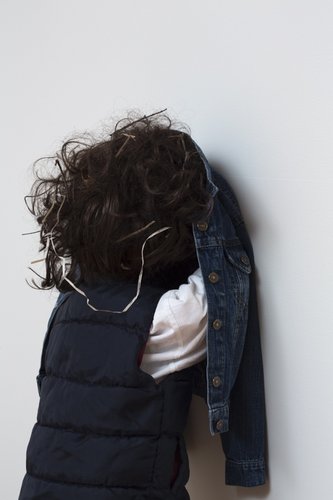

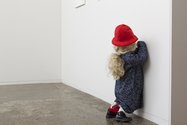
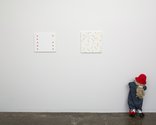
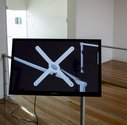

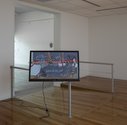
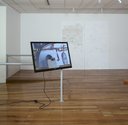


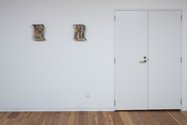
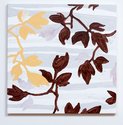
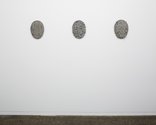
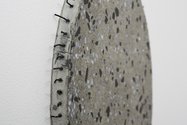
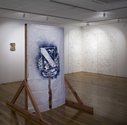

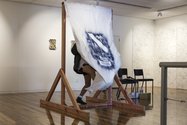
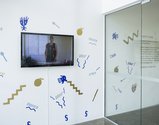
 Advertising in this column
Advertising in this column Two Rooms presents a program of residencies and projects
Two Rooms presents a program of residencies and projects



This Discussion has 0 comments.
Comment
Participate
Register to Participate.
Sign in
Sign in to an existing account.